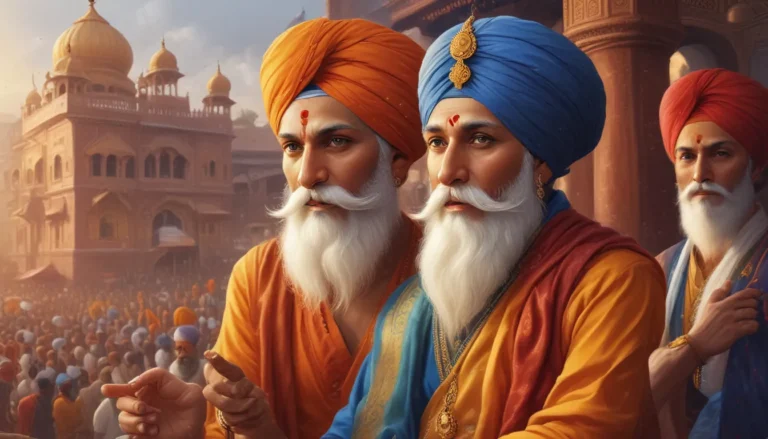The images in our articles may not match the content exactly. They are used to grab your attention, not to show the exact details in the text. The images complement the text but do not replace it.
From the iconic Latin cross to the intricate Celtic cross, the world of crosses is rich with symbolism and history that spans various cultures and religions. Whether you are a devout Christian, a history enthusiast, or simply curious about the diverse meanings behind these symbols, delving into the world of crosses can be a fascinating journey. In this article, we will explore the origins, meanings, and unique characteristics of different types of crosses, shedding light on the captivating stories and traditions that have shaped these timeless symbols.
Unveiling the Origins of Crosses
The history of crosses extends far beyond the realm of Christianity, with civilizations across the globe embracing this symbol long before its association with Jesus Christ. Egyptians, Indians, Persians, Greeks, Europeans, and Syrians, among others, have used the cross as a symbol of faith, strength, and identity. From being adorned as jewelry to symbolizing divine protection, the cross has played a significant role in various cultures throughout history.
During the era of the Diocletianic Persecution, crosses were used as instruments of torture and punishment, particularly targeting early Christians. However, the tide turned when Emperor Constantine, the first Roman emperor to legalize Christianity, ushered in a new era of acceptance and recognition for the cross. The legend of Constantine’s mother, Helena, finding pieces of the original cross of Jesus Christ added a mystical aura to the symbol, further solidifying its significance in Christian history.
Diving into the Diversity of Crosses
Ankh
The Ankh, with its distinctive cross topped by a circle, holds a special place in Egyptian art and mythology. A symbol of life and resurrection, the Ankh was often depicted in the hands of Egyptian gods and pharaohs. The Coptic Orthodox Church also adopted the Ankh as a symbol, reflecting the blending of ancient Egyptian and Christian traditions.
Maltese Cross
The Maltese Cross, characterized by its eight-pointed design, is closely associated with the Knights Hospitaller, a chivalric order known for its dedication to caring for the sick and injured. Originally formed to provide medical aid to pilgrims in Jerusalem, the Knights later evolved into a formidable military force. The Sovereign Military Order of Malta continues to uphold the legacy of the Maltese Cross through its humanitarian work and diplomatic efforts.
Jerusalem Cross
The Jerusalem Cross, also known as the Five-Fold Cross, symbolizes Christ’s five holy wounds, representing his sacrifice and victory over death. Originating in the era of the Crusades, the Jerusalem Cross was used as a coat of arms for the city of Jerusalem and later adopted by the Equestrian Order of the Holy Sepulchre of Jerusalem.
Orthodox Cross
The Russian Orthodox Cross, distinguished by its slanted line intersecting the horizontal bar, pays homage to the two thieves crucified alongside Jesus. This unique design highlights the presence of Saint Dismas, the repentant thief, and Gestas, the unrepentant thief, in the crucifixion narrative.
Gamma Cross
The Gamma Cross, formed by the Greek letter gamma, symbolizes the Four Evangelists and their collective message of Christ’s teachings. While variations of the gamma cross exist, such as the voided cross and the swastika cross, it is essential to recognize the diverse meanings associated with each iteration.
Chi Rho Cross
Also known as the Chrismon or Constantine’s Cross, the Chi Rho Cross combines the Greek letters Chi and Rho to spell Christos. Embraced by Roman Emperor Constantine as a symbol of divine protection and victory, the Chi Rho Cross embodies the triumph of Christ over death and sin.
Coptic Cross
The Coptic Cross, sometimes referred to as the Crux Ansata, reflects the intricate fusion of Christian and Egyptian symbolism. Drawing inspiration from the ankh, the Coptic Cross symbolizes faith, resurrection, and the enduring legacy of Christ’s sacrifice.
Latin Cross
The Latin Cross, synonymous with Catholicism and the broader Christian faith, stands as a universal symbol of redemption and salvation. Adorned with the INRI inscription, signifying Jesus of Nazareth, King of the Jews, the Latin Cross serves as a poignant reminder of Christ’s ultimate sacrifice for humanity.
Celtic Cross
The Celtic Cross, deeply rooted in Irish heritage and Christian tradition, features intricate knotwork and intricate designs that blend Celtic symbolism with Christian themes. With its signature ring intersecting the cross, the Celtic Cross evokes a sense of unity and continuity, bridging the worlds of faith and culture.
Golgotha Cross
The Golgotha Cross, adorned with symbolic elements such as the Lance of Longinus and the sponge, captures the profound significance of Christ’s crucifixion and the transformative power of forgiveness. With its poignant imagery of Christ’s journey to Golgotha and the inscription affirming his kingship, the Golgotha Cross embodies themes of redemption and grace.
Tau Cross
The Tau Cross, reminiscent of the Greek letter tau and associated with figures like St. Francis and St. Anthony, symbolizes divine protection and salvation. Rooted in biblical references and ancient traditions, the Tau Cross serves as a potent emblem of faith and piety.
Papal Cross
The Papal Cross, reserved for the Pope as the highest authority in the Roman Catholic Church, conveys the tripartite symbolism of the Holy Trinity and the Pope’s spiritual authority. With its three horizontal lines representing Heaven, Earth, and the Church, the Papal Cross underscores the Pope’s role as a bridge between earthly and divine realms.
Greek Cross
The Greek Cross, also known as the Crux Immissa Quadrata or the Tetractys, features four equal extensions that symbolize unity and balance. Widely used in the Eastern Orthodox Church and revered for its simplicity and symmetry, the Greek Cross embodies the timeless principles of faith and harmony.
Scandinavian Cross
The Scandinavian Cross, prevalent in flags of Nordic countries like Denmark, Iceland, and Sweden, reflects the Christian heritage and cultural identity of these nations. Positioned off-center and imbued with historical significance, the Scandinavian Cross symbolizes devotion, courage, and national pride.
Saltire (St. Andrew’s Cross)
The Saltire, or St. Andrew’s Cross, is a distinctive symbol associated with Scotland and the patron saint of St. Andrew. Legend has it that St. Andrew chose to be crucified in the shape of a diagonal cross out of humility and reverence for Christ, showcasing a unique representation of martyrdom and devotion.
Sun Cross
The Sun Cross, originally a pagan symbol representing the sun’s life-giving energy, evolved over time to embody authority and empowerment. With associations to alchemy, astrology, and angelic symbolism, the Sun Cross reflects the multifaceted meanings and interpretations embedded within this ancient symbol.
Lithuanian Cross
The Lithuanian Cross, also known as the double cross, serves as a powerful emblem of unity and independence for Lithuania. Originating as a personal insignia of King Jogalia of Poland, the double cross symbolizes the baptism of Lithuania into Christianity and the enduring spirit of the Lithuanian people.
Byzantine Cross
The Byzantine Cross, revered by Ukrainian Orthodox Christians for its distinctive design and historical significance, embodies the rich heritage of the Byzantine Empire. Reflecting a focus on the humanity of Christ and the mystical symbolism of the cross, the Byzantine Cross stands as a testament to the enduring faith of Eastern Orthodox believers.
Bolnisi Cross
The Bolnisi Cross, derived from a 5th-century design found in Georgia’s oldest church, symbolizes the country’s Christian roots and spiritual resilience. Embraced as a national symbol, the Bolnisi Cross inspires Georgians to cherish their heritage and uphold the values of faith and tradition.
Schwarzkreuz
The Schwarzkreuz, commonly known as the Iron Cross, holds a complex legacy entwined with Prussian history and military traditions. Adopted by the German military and later misappropriated by Nazi Germany, the Schwarzkreuz serves as a reminder of the shifting narratives and meanings associated with historical symbols.
St. James Cross
The St. James Cross, adorned with Compostela shells and evocative imagery of pilgrimage and martyrdom, pays homage to the patron saint of Spain and his enduring legacy. With its ties to Santiago de Compostela and the adventurous spirit of St. James the Greater, this cross embodies a profound connection to faith and exploration.
Toulouse Cross
The Toulouse Cross, also known as the Occitan cross or the cross of Languedoc, carries a rich tapestry of regional history and cultural identity. Embraced by the Occitan people and associated with the legacy of St. Giles of Toulouse, the Toulouse Cross symbolizes resilience and tradition in the face of historical upheavals.
Marian Cross
The Marian Cross, a symbol of reverence and devotion to Mother Mary, stands as a testament to the enduring legacy of the Virgin Mary in Christian tradition. Inspired by Pope John Paul II and the Miraculous Medal, the Marian Cross embodies the profound bond between Mother and Son, reflecting themes of love, sacrifice, and divine intercession.
Anchored Cross
The Anchored Cross, also known as the mariner’s cross, intertwines themes of faith and perseverance with maritime symbolism. Associated with the martyrdom of St. Clement and the seafaring traditions of early Christians, the Anchored Cross represents spiritual guidance and steadfast resolve in the face of adversity.
Grapevine Cross
The Grapevine Cross, synonymous with Georgian Orthodox tradition and the Christianization of Georgia, features distinctive droopy arms and intricate symbolism. Linked to the legend of Saint Nino and her miraculous encounter with Mother Mary, the Grapevine Cross serves as a poignant reminder of faith, transformation, and divine grace.
Basque Cross
The Basque Cross, also known as the Lauburu Cross, draws upon mythological roots and solar symbolism to reflect the cultural heritage of the Basque people. With its intricate design and associations with the sun, the Basque Cross stands as a testament to ancient traditions and enduring spiritual beliefs.
Serbian Cross
The Serbian Cross, a symbol of national identity and Orthodox Christian faith, embodies the rich history and cultural heritage of Serbia. With its roots in Byzantine symbolism and the legacy of Saint Sava, the Serbian Cross serves as a powerful emblem of unity, strength, and spiritual resilience.
Novgorod Cross
The Novgorod Cross, unique to the region of Novgorod in Russia, showcases distinctive four-pointed designs with symbolic circles. Evocative of Byzantine influences and local religious practices, the Novgorod Cross stands as a testament to the enduring faith and artistic traditions of the Russian people.
Bottony Cross
The Bottony Cross, renowned for its button-like circles at the end of each arm, serves as a heraldic emblem with decorative and symbolic significance. Often used in armor and associated with the Episcopal Church, the Bottony Cross embodies themes of strength, unity, and spiritual protection.
Cross Crosslet
The Cross Crosslet, often mistaken for the Bottony Cross, holds its own unique symbolism and associations with nobility and religious orders. Embraced by figures like Beauchamp, Earl of Warwick, and the Dievturība religious movement in Latvia, the Cross Crosslet underscores themes of faith, heritage, and enduring traditions.
Cross of St. Peter
The Cross of St. Peter, also known as the Petrine Cross, pays tribute to the martyrdom of St. Peter the Apostle and his unique request to be crucified upside down. Symbolizing humility and unwavering faith, the Cross of St. Peter stands as a poignant reminder of the sacrifices made in the name of Christ.
Archbishop Cross
The Archbishop Cross, also known as the Patriarchal Cross, serves as a symbol of authority and spiritual hierarchy within the Roman Catholic Church. With its double-barred design and association with archbishops, the Archbishop Cross reflects themes of divine grace, leadership, and the sacred responsibilities entrusted to church leaders.
Cross of Burgundy
The Cross of Burgundy, a variant of St. Andrew’s cross, holds a storied legacy intertwined with the history of France and the Habsburg dynasty. Defined by its jagged edges and historical significance in European conflicts, the Cross of Burgundy underscores themes of valor, sovereignty, and territorial claims.
Templar Cross
The Templar Cross, synonymous with the Knights Templar and their legendary crusades, embodies themes of courage, faith, and martyrdom. With its iconic red design and associations with chivalry and divine protection, the Templar Cross stands as a potent symbol of devotion and sacrifice.
Nazi Swastika
The Nazi Swastika, once a symbol of pagan worship and auspicious omens, became synonymous with racism and totalitarian ideologies under Adolf Hitler’s regime. Associated with the atrocities of the Holocaust and World War II, the Nazi Swastika serves as a stark reminder of the dark chapters in human history and the enduring impact of hatred and intolerance.
Indian Swastika
The Indian Swastika, a symbol of prosperity and divine blessings in Hindu, Jain, and Buddhist traditions, embodies positive energy and auspicious beginnings. Infused with cultural significance and symbolizing the cyclical nature of life, the Indian Swastika stands as a testament to the enduring spiritual beliefs and practices of diverse Eastern religions.
Balkenkreuz
The Balkenkreuz, a heraldic symbol used by the German Armed Forces during World War I and World War II, reflects military traditions and historical legacies. Derived from ancient cross designs and distinct from Christian symbolism, the Balkenkreuz embodies themes of military honor, power, and national identity.
Cross of Lorraine
The Cross of Lorraine, a double-barred cross symbolizing French resistance and unity, traces its origins to Hungarian royalty and the Lorraine Duchy. Embraced as a symbol of national pride and resilience, the Cross of Lorraine underscores themes of courage, defiance, and historical continuity.
Fylfot
The Fylfot, also known as the left-facing Swastika, carries symbolic significance in Germanic and Norse mythology as a sacred emblem of Thor. Evoking themes of divine power and ancestral heritage, the Fylfot symbolizes protection, strength, and spiritual guidance in ancient traditions.
Cross Pisana
The Cross Pisana, granted by Pope Benedict VIII to the people of Pisa, symbolizes valor, faith, and divine protection. With its distinctive paw-like motifs and historical origins in the battles against Saracens, the Cross Pisana stands as a testament to the enduring spirit of a community united by faith and fortitude.
Embracing Crosses as Symbols of Faith and Heritage
As we journey through the diverse array of crosses spanning cultures, religions, and historical epochs, one thing becomes abundantly clear: the cross is more than just a symbol. It is a profound reflection of human spirituality, resilience, and interconnectedness across time and space. Whether adorned as jewelry, emblazoned on flags, or etched into architectural marvels, crosses continue to inspire awe, reverence, and contemplation in all who encounter them.
From the ancient wisdom of Egyptian ankh to the intricate knotwork of Celtic crosses, each symbol carries within it a unique story, a tapestry of meanings woven through the fabric of human experience. As we delve into the world of crosses, let us pause to reflect on the enduring legacy of these timeless symbols and the profound truths they illuminate about faith, sacrifice, and the transcendent power of belief.
With each cross we encounter, may we find solace, inspiration, and a deeper connection to the spiritual traditions that have shaped our world. As we navigate the complexities of our modern era, may the symbols of the past serve as guiding lights, illuminating our path with their timeless wisdom and eternal truths. Let us embrace the diversity of crosses as a testament to the rich tapestry of human faith and heritage, honoring the enduring legacy of these sacred symbols across cultures and generations.






